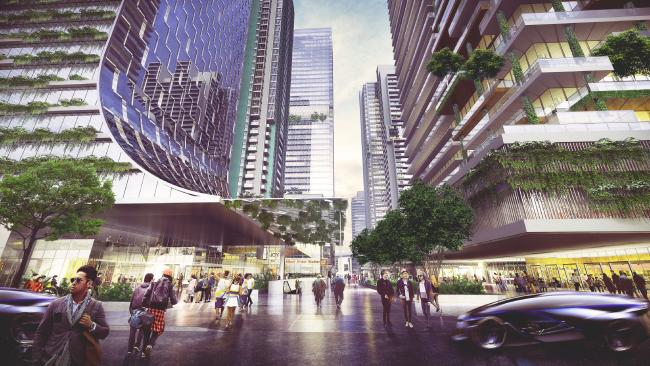“
Urbis’ City Stitch proposed a dramatic repurposing of the Centenary Place space connecting the CBD to Fortitude Valley.
RPS regional technical director for landscape architecture Andrew Green predicted inner-city Brisbane would be unrecognisable in 10 years.
“For a long time we all lived on the fringes of the city because they were green and lush, but the next generation can’t afford that and we’ve run out of land,” he said.
“There is a huge interest now living close to town and work. “The challenge for the council and for landscape architects is to create an environment for people to enjoy.”
Mr Green said developers were coming up with creative ways to include more public space on their sites.
One hypothetical example was Urbis’ City Stitch an award-winning entry to a design competition which proposed a dramatic repurposing of the Centenary Place space connecting the CBD to Fortitude Valley.
Urbis Associate Director Nicholas Stevenson said the design was a layered urban garden that provided 200 per cent more open space. “It is a design for very much a mixed-use development,” Mr Stevenson said.
“We reinterpreted the space as a forest with open space at different levels and green spaces within the building.”
It won’t be built, but the plan is “100 per cent realistic”, Mr Stevenson said.
See the full article on The Courier Mail here.

